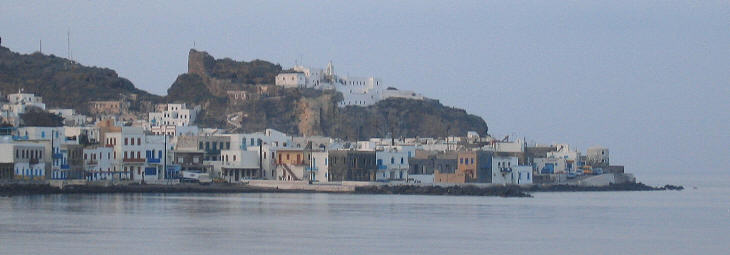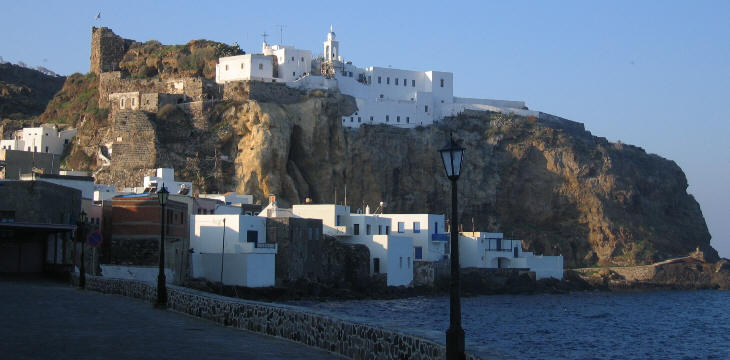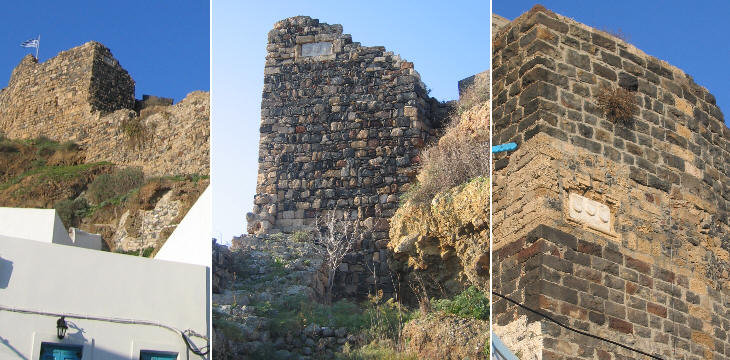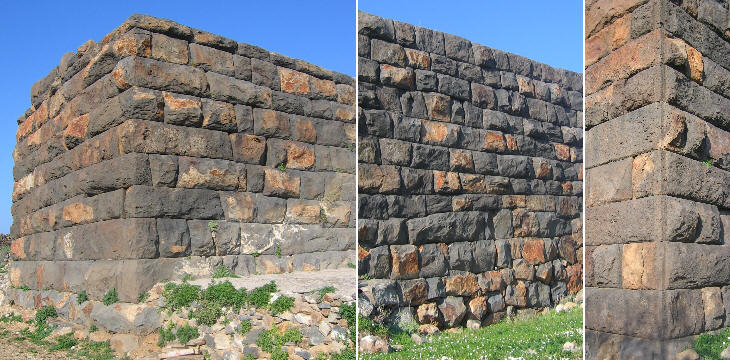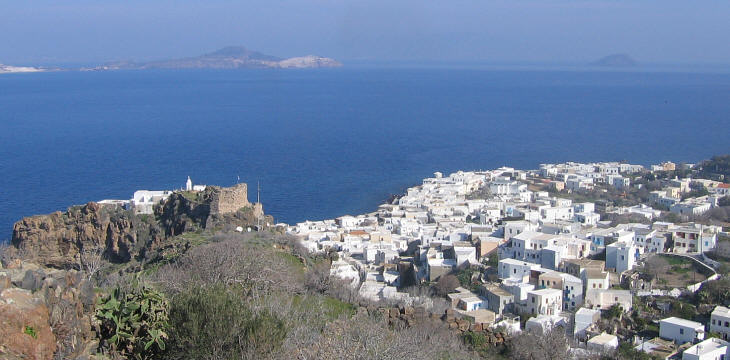  What's New! Detailed Sitemap All images © by Roberto Piperno, owner of the domain. Write to romapip@quipo.it. Text edited by Rosamie Moore. |
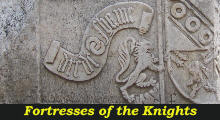 Nissiros Nissiros
L'isola di Nissiros ha la tipica forma circolare di un cono vulcanico: la vita del vulcano è nella sua fase terminale: il cratere ha solo delle piccole fumarole dalle quali escono vapori solforosi.
La natura vulcanica del suolo rende Nissiros molto fertile e l'isola è coperta di coltivazioni, in particolare di mandorli; per lo stesso motivo il suo profilo costiero non presenta significative indentature adatte ad essere trasformate in porti. Mandraki, (il Mandracchio) sulla costa settentrionale, nonostante che il nome voglia dire piccolo porto, è privo di strutture che facilitino l'approdo.
Nissiros passò a far parte dei domini dei Cavalieri di S. Giovanni poco dopo che ebbero completato la conquista di Rodi nel 1308. Veniva assegnata ad un cavaliere che la governava per conto dell'Ordine. Solo nel Quattrocento la rocca sopra all'approdo venne fortificata.
Torri e mura proteggevano solo il lato orientale (verso terra) perchè la scogliera sugli altri lati era così alta e ripida da scoraggiare tentativi di assalto. Gli stemmi sulle mura appartengono ai Grandi Maestri Milly (1454-61), Orsini (1467-76) e d'Aubusson (1476-1503).
Il luogo dove sorge il castello è oggi chiamato il monastero, a causa del bianco monastero costruito al suo interno che sembra sospeso nell'aria: viene invece chiamata (Paleo)Kastro l'acropoli fortificata dell'antica Nissiros ad un chilometro circa a sud dell'abitato.
Le mura dell'antica acropoli furono costruite allineando con cura grandi pietre squadrate: in alcuni punti si osserva una tenica di costruzione più antica. Torri angolari rafforzavano le mura. Il loro restauro è forse stato eccessivo.
|
